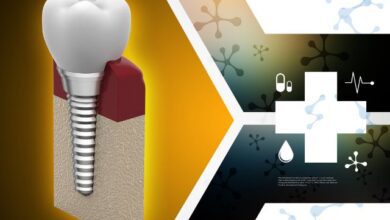Recovery Habits All Athletes Should Have

While training hard is important to any high-achieving athlete, recovery is just as vital. Intensive training can result in fatigue, injury or even permanent damage. Hence, recovery strategies are crucial to restoring your body to its optimal level so that you can continue doing what you love. Just like exercise, there are techniques to help you recover faster.
Stretching
Stretching should be a vital part of your training, and should be done both before and after the workout. 10 to 15 minutes of stretching per session is crucial in lessening the wear and tear your body goes through during rigorous exercise. While stretching seems less active than standard exercise, it offers just as many health benefits beyond increased flexibility. Stretching lengthens the muscles, promoting blood flow. With more blood flow your muscles will be more relaxed and less sore after a workout. It also greatly decreases the risk of injury
Meditation
Training is not just about improving your physical health, but your mental health as well. After all, a good training regime should be all-rounded. Just five to ten minutes of meditation a day can do wonders for clearing your mind. It also minimises the risk of burnout from intensive, long-term training. Especially with the stress and noise of everyday modern living, carving out some time to calm your mind is essential in ensuring that you remain in top form. Yoga and mindful walks are some enjoyable activities to consider. A mindful walk involves a short walk where you make an effort to stay in the present and pay attention to your surroundings. Like stretching, it should not be overlooked just because it is less rigorous and takes less time to complete than your other exercises.
Active recovery
Active running takes place right after your workout. Instead of stopping immediately after rigorous exercise, continue your movements at a lower intensity for a few more movements. You can end your run with a slow jog as you head back home or to the shower, or do a few more reps with a light load as you end your weight-lifting session. Ending your workout gradually reduces your fatigue and injury risk afterwards. Active recovery increases blood circulation in the muscles and joints, decreasing inflammation and its associated pain. Gradually tapering off exercise also decreases stiffness as the accumulated lactic acid is slowly released. It also helps with fitness and endurance as it stabilises your heart rate.
Healthy diet
To effectively build your strength, you will need carbohydrates to fuel your exercise, protein to build muscle, as well as vegetables to give you the vitamins and nutrients needed to maintain the overall health of your body. Don’t forget that good health is an irreplaceable foundation for every athlete.

Rest
While you may be eager to challenge yourself and train as hard as you can, pacing yourself is equally as important. Exercising moderately but consistently is better than charging ahead, only to stop due to injury or burnout. Give your body ample time to rest after every workout session. If you are overexerted for one session, do not be afraid to take a longer time to rest. Remember to schedule regular breaks or cheat days, especially when other aspects of your life become taxing. As the saying goes, if you do not choose a day to rest, your body will do it for you.
Rest, ice, compression, elevation (RICE)
The RICE technique is used by doctors to treat injuries and sprains. You can easily do it at home to speed up your recovery. Firstly, rest after an injury. Immobilise the injured body part to ensure that you do not accidentally aggravate it when you move about in your daily life. Secondly, ice the injury. You can use a cold compress, or simply a plastic bag filled with ice. Icing numbs the pain, giving you some relief. Thirdly, compress the injury as the pressure helps to reduce swelling. Finally, elevate the injured body part above your heart. This reduces blood flow to the injured area thus reducing pain and swelling in the process. Icing and compressing can be done manually or with ice and compression machines designed specifically for sports injuries.
Foam Rollers
Foam rolling can hurt, which makes it an unappealing option for any recovering athletes. However, the pain is a sign that your muscles are overly tight, which is all the more reason to loosen it via foam rolling. This technique hurts because your fascia, which refers to the connective tissue that surrounds all your muscles, is overly tight and stiff. This tightness, if untreated, increases the risk of injury as it prevents your body from moving in the correct form. When the fascia is loosened with the correct technique, it allows your muscles to glide smoothly, increasing your ease of movement and stopping you from becoming even more fatigued.
Foam rollers have different degrees of firmness. Soft foam rollers are ideal for beginners as it is less painful and hence easier to use consistently. As you build up your pain tolerance, you can gradually incorporate a firm foam roller into your routine to maximise your post-workout recovery.
While foam rollers can be bulky, the bulk gives you a large surface area to work on many muscle groups at once. This makes it ideal for your torso, quads and calves. Besides foam rollers, you can also try the self-myofascial release and percussion massagers. The latter is easier to use and more portable compared to foam rollers.
Conclusion
With that, we’ve come to the end of this article! For any athlete, training is not just about working hard but working smart. It is vital to give your body ample time to rest and repair after every workout to minimise soreness and the risk of repetitive strain injury. There are various things, from diet to post-workout activities, that you should incorporate into your training routine so that your body is in optimum shape — and stays that way for a long time. With that, we wish you all the best in your training and athletic journey!





